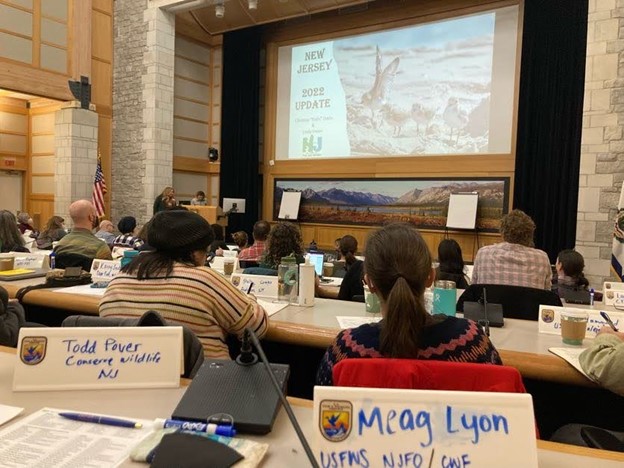Piping Plover and Least Tern Workshop

by Meaghan Lyon, Wildlife Biologist
At the beginning of February, CWF biologists Todd Pover, and Meaghan Lyon attended the USFWS’s Piping Plover and Least Tern Workshop at the National Conservation Training Center in West Virginia. The winter season is the perfect time for beach nesting bird folks to gather and discuss the status of each state’s breeding population and how we can do better to reach recovery goals for these endangered species in the coming years.

For management purposes, the east coast of the United States is broken up into three sections; the Southern recovery unit, the mid-Atlantic recovery unit (this is New York and New Jersey!), and the New England recovery unit. The Southern recovery unit, consisting of plovers breeding from North Carolina north to Delaware, has been on a decreasing trend for productivity and not meeting recovery goals, whereas the population in New England is booming with pairs (so much so that plovers are nesting in parking lots and the backyards of beach front homes!). New Jersey and New York have been holding steady with 581 pairs of piping plover combined and just barely meeting our collective recovery goal.
Topics of high interest among the group of roughly 100 participants included predators, migratory pathways, and advancing diversity and inclusion among our community. Biologists across the coast have been grappling with predation by ghost crabs and this could be increasingly problematic in the future with impacts from climate change. As the climate warms, we could be seeing more mild winters, which translates to less crab die off during the winter and bigger crabs during the beach nesting bird season, thence becoming more of a threat to nests and chicks.
Workshops like this allow us to join together and discuss what is working and what is or could be problematic in the future so that biologist across the range can be well equipped with the knowledge and connections to protect plovers and all of the other species that use beach habitats across the range.